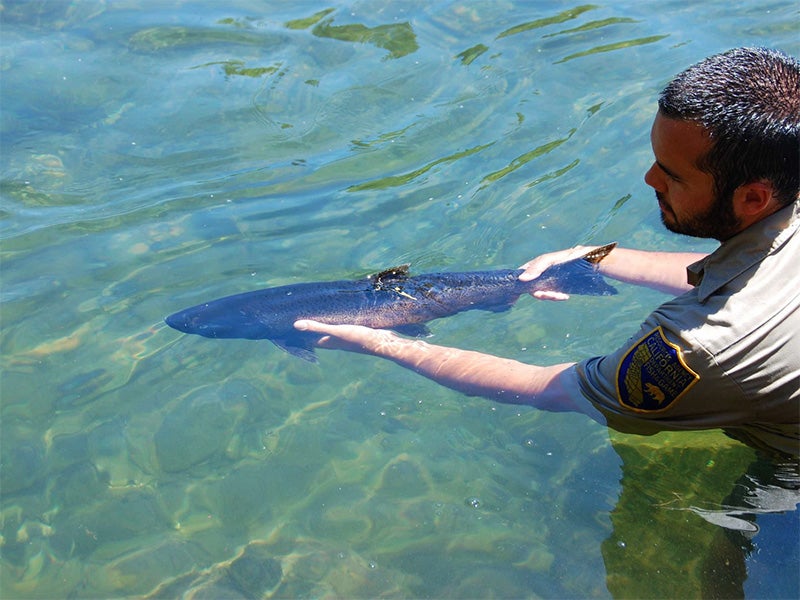Protecting Spawning Salmon in Butte Creek
Butte Creek is one of the last strongholds for spring-run Chinook salmon in California’s Central Valley. The species is believed to have gone extinct in the southern portion of its range in the San Joaquin River system and clings to survival with small runs in a few other Sacramento River tributaries in addition to Butte Creek.
Case Overview
Pacific Gas & Energy is licensed by the Federal Energy Regulatory Commission to generate electricity using Butte Creek waters. The utility’s water diversions from the creek have greatly reduced the available deep, cold pools of water needed by the protected salmon to hold through the summer until they spawn in the early fall. Low flows and high water temperatures led to massive fish kills in Butte Creek in 2002 and 2003. Estimated numbers of adult spring-run Chinook returning to Butte Creek fell from nearly 17,000 in 2005 to 2,561 in 2009.
Spring-run Chinook salmon are so named because they migrate as adults from the ocean to their birth streams during the spring when water flows are high, allowing them access to higher elevation pools where they wait out the summer to lay their eggs in the fall. Spring-run can only survive in creeks and streams fed by cold snowmelt or cold springs in order to withstand high summer temperatures. This severely limits the remaining stream and creek habitat still suitable for spring-run survival. Butte Creek has by far the largest remaining wild spring-run Chinook salmon population in the Central Valley. The species is believed to have gone extinct in the southern portion of its range in the San Joaquin River system and clings to survival with small runs in a few other Sacramento River tributaries in addition to Butte Creek. It was listed as threatened under the federal Endangered Species Act in 1999.
During the spring, summer, and early fall months, adult spring-run Chinook occupy approximately ten miles of holding and spawning habitat in Butte Creek. Fish habitat conditions in this section of Butte Creek, including water temperature and level of flow, are controlled by operation of the DeSabla-Centerville hydroelectric project. Conservation and fishing groups believe the licensing agency, FERC, and the operator, PG&E, should ensure that hydropower operations do not harm the spring-run or degrade their holding and spawning habitat.
A major obstacle to fish restoration is Centerville Head Dam, located on Butte Creek 300 yards below DeSabla Powerhouse. The head dam almost completely blocks salmon from reaching the creek’s upper watershed. PG&E’s application for a new FERC license submitted in 2007 proposes no alteration of the dam or mitigation for the loss of habitat that it causes.
The Ninth Circuit Court of Appeals ruled that the Federal Energy Regulatory Commission need not consult with the National Marine Fisheries Service concerning water for the salmon, a decision proved wrong by subsequent rulings.
Earthjustice has repeatedly threatened a new suit against PG&E and FERC for illegal “taking” of protected fish, as happened with massive dieoffs in 2002 and 2003, which has probably helped the agencies agree to provide sufficient water for the spawners.
With the ongoing drought in California, there were no diversions in 2014.

Case Updates
Case page created on October 6, 2004.
